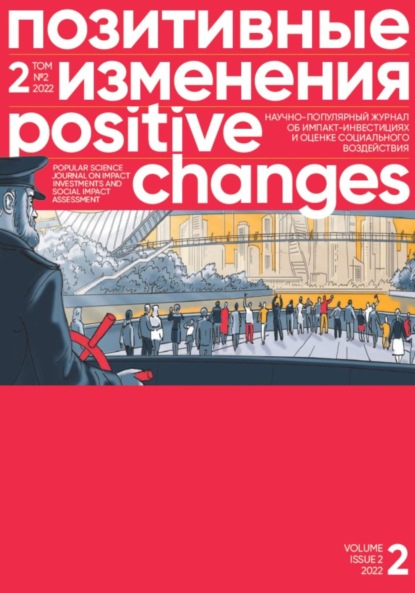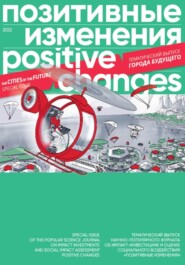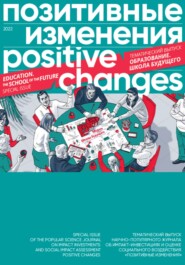По всем вопросам обращайтесь на: info@litportal.ru
(©) 2003-2024.
✖
Позитивные изменения. Том 2, № 2 (2022). Positive changes. Volume 2, Issue 2 (2022)
Настройки чтения
Размер шрифта
Высота строк
Поля
9. Negotiating.
10. Cognitive flexibility.
In Russia, an even simpler model called 4C is used. The idea is there are four key competencies starting with «C» that every high school student needs to develop in order to meet the demands of the labor market in the future (Foxford.Media, 2019):
1. critical thinking – the ability to critically evaluate information coming from the outside, to analyze it and to check its validity, to see causal relationships, to discard the unnecessary and highlight the important, to draw conclusions;
2. creativity – the ability to think outside the box, to find spur-of-the-moment solutions to problems, to react flexibly to changes;
3. communication skills – the ability to communicate, convey one’s message, hear the others, negotiate;
4. coordination – the ability to work in a team, to take on both leadership and rank-and-file functions, to delegate tasks and monitor performance.
CAN THESE SKILLS BE TAUGHT AND EVALUATED?
Since soft skills are not purely skills, but also character traits, there is much debate in science and education about the extent to which character traits can be influenced or shaped, and how changes in these skills and personality traits can be measured.
Here we can rely on a specialized analytical report published by the Organization for Economic Cooperation and Development (OECD, 2015). The report focuses on the role of social and emotional skills and presents the results of large-scale longitudinal studies spanning nine countries.
Here are some key findings of the study:
Children need a balanced set of cognitive, social, and emotional skills to achieve positive outcomes in life.
Cognitive, social and emotional skills all play an important role in improving economic and social outcomes in people’s lives. At the same time, social and emotional skills interact with cognitive skills, mutually enriching each other and thus further increasing the likelihood of the children achieving positive outcomes as adults.
Teachers and parents can help improve children's social and emotional skills by building their relationships with children and using hands-on learning techniques.
Contrary to popular misconception, children are not born with a fixed set of abilities. Teachers and parents can play a role in children’s development. Strong parent-teacher-child relationships and the use of real-life examples and hands-on experiences while learning are some of the most efficient approaches to building the sense of independence, responsibility, teamwork skills, and self-confidence in children.
Since "skills breed skills", early exposure to social and emotional skills may have a greater effect. Social and emotional skills are more flexible between early childhood and adolescence. Early «investment» in the development of the child’s social and emotional skills is especially important because these skills develop gradually based on past «investments» in them. In addition, people with higher levels of social and emotional skills (e.g., self-confidence and perseverance) are likely to benefit more from further investment in cognitive skills (e.g., math and science lessons).
Social and emotional skills can be reliably measured across cultural or linguistic boundaries.
Social and emotional skills can be reliably measured for different age groups within cultural and linguistic boundaries. This includes personality self-assessment, behavioral qualities and objective psychological tests. Some of these indicators predict a variety of success factors in education, the labor market, and society as a whole.
SOFT SKILLS IN RUSSIAN EDUCATION: THE BEGINNING OF THE CONVERSATION
Having identified the range of skills and character traits that can be classified as soft skills, and having made sure that the development of these skills in children can be influenced and measured, we offer a brief look at how Russian schools see the teaching of such skills. To begin with, we must say that the Federal State Educational Standards (FSES) actually take soft skills into account. For example, the FSES of basic general education (grades 5–9) states that the following must be provided in the course of education:
• development of personal qualities necessary for solving everyday and unconventional tasks in order to adequately orient oneself in the surrounding world;
• shaping a culture of lifelong learning and self-development;
• personal development of the students, including civic, patriotic, spiritual, moral, aesthetic, physical, labor, environmental education, and recognition of the value of scientific knowledge.
However, education experts agree that both the FSES and schools working under the traditional educational model do not venture beyond simply declaring the importance of teaching the above-mentioned qualities. That is why we invited representatives of alternative schools and experts in alternative education to talk about soft skills.
Yaroslava Kabanova, director of ILI school (St. Petersburg), says the need for soft skills is widely recognized in Russian education today, including in the Ministry of Education; all modern schools are trying to pay attention to these skills. You can hear soft skills being talked about at every education conference: "Everyone talks about it incessantly and implements it as best as they can. Implementation is the biggest issue. Everybody understands how important soft skills are, but few realize how they can be implemented and taught."
Let’s focus now on a few conceptual issues related to the topic of soft skills reported by experts.
Why is there so much talk about soft skills today? Alexey Semyonychev, the administrator of the largest Russian-language Facebook group[2 - Is part of Meta Platforms, an organization that was declared extremist and banned in Russia.] on alternative education (44,500 members), founder of the Alternative Education in Russia project, and author of books on methods of family education, says soft skills describe "a certain type of thinking that has recently become highly relevant. Why did this happen? Because the world is changing rapidly, it is becoming global, more complex, it is moving from vertical connections to horizontal ones. The Internet is an example of horizontal connections, where you can easily communicate with someone from Nepal, Moscow or Antarctica, without leaving your home in the United States. Language does not matter in this case, the only thing that matters is your desire to communicate. That’s what soft skills are about. They are the skills that enable us to make horizontal and productive connections with each other."
According to Semyonychev, horizontal connections between people represent a new type of relationship, which started developing rapidly in the 21st century. These are pretty well known things. Like, how do we negotiate with one another? How do we communicate non-violently? How do we understand each other’s emotions?
They are the skills that enable us to make horizontal and productive connections with each other.
Why is there no place for soft skills training in traditional schools?
Svetlana Marzeyeva, author of the A’ducation project, head of the Association of Family Schools, board member of the League of Educators, believes that talking about soft skills is "a way to identify educational needs in modern terms and to show the direction in which education needs to change". Svetlana says the school’s greatest problem is that it is "dead as a learning institution; it is only effective as a children’s storage facility. If there is one thing public schools in Russia are good at, that’s 'keeping’ children. Parents need a place to keep their children at, while they are at the office. And while you keep the children in storage, you have to keep them busy. Therefore, each subject is studied to extreme depths, both theory and practical application. Remember Russian classes, where we studied conjunctions vs. syndetic words? Do you still remember the difference? Or in biology, the minutest details of how the body functions, with all the medical names, like three kinds of capillaries, have you ever used that knowledge? The same is true about every subject. Schoolchildren are overloaded with meaningless memorization, with no time left for anything else."
Alexey Semyonychev adds to the discussion from the opposite side. He believes it is impossible to teach soft skills in the modern (traditional) school, because that school is based entirely on vertical connections: "Who needs soft skills when we have vertical connections, like those between the boss and his/her subordinates? The traditional school is a vertical system. Soft skills are out of the question there, because soft skills are based on respect for one another."
According to the expert, the traditional school is a system where everything that can be killed in the soft skills system, gets killed. "What kind of communication can there be when the teacher is sitting up there talking down to you. The ability to choose – what does a student choose in school? He or she doesn’t choose anything. The ability to understand emotions – who’s going to teach them to understand emotions? A teacher who has 30 students in his class?"
The school’s grading system also does not take into account soft skills. Meanwhile, critical thinking is based on the child having to assess critically what is happening around them, that is, have his or her own opinion. "I’m afraid that’s even worse in school. Having your own opinion at school is outright a health hazard," the expert says.
The whole reality around the child in a regular school goes against many of the principles of soft skills. "Before introducing soft skills, we need to change the school first," Alexey Semyonychev sums up. After school, when people are older and no longer pressured by teachers and the school environment, they can finally start developing their soft skills with greater success.
THE HIDDEN CONTENT OF EDUCATION
Speaking of teaching soft skills in schools, experts touch upon the connection between education and upbringing. Yaroslava Kabanova points out that we often forget that a child spends a great amount of time at school, where he or she develops as a person. Education is about teaching as much as about upbringing. If we leave upbringing out of the curriculum, the child still receives it from the adults around him: teachers, tutors, everyone else at school.
"It is very important to have the right kind of people around the child. The school’s job is to develop the child’s circle of communication, to lay down the basic values, concepts, principles, to build up the child’s personality, to help him find his way, to help him in his development, in communication. Because that’s the society we are going to have in five years; that’s the environment we are all going to live in. That’s the future we are shaping," Yaroslava Kabanova says.
Here it makes sense to consider the pedagogical and methodological term "hidden content of education".
THE HIDDEN CONTENT OF EDUCATION
"Education is determined by the specific atmosphere at the educational institution, the 'school spirit' as much as it is by the set of academic subjects, specializations, the volume of material taught, etc.
The essence of this phenomenon is revealed by the term "hidden curriculum," used by many Western researchers. To me personally, the term "hidden content of education" seems quite acceptable. It can be accepted as a working definition precisely because in the very process of revealing its theoretical and practical content, we will inevitably come to answering the question of what is actually taught and what should be taught in school.
I side with the researchers of this hidden content in that it should include the following phenomena of school organization:
• various kinds of differentiation of students by to their abilities, including our domestic invention of recent years – remedial classes and special classes for gifted children (the "fools' classes" and the "nerds' classes", as children themselves refer to them);
• the real power structure in the school (totalitarian or hierarchical, democratic or liberal);
• the language of a class or school (not formally, of course, but by the actual semantics, tone, style, and volume of vocabulary in use);
• the established practice of telling the teacher what he or she expects vs. what the student actually thinks;
• ability to act in the situation of a test or exam (not the cultural forms of behavior in a test situation, but the established rules of cheating, peeking, guessing, etc.);
• the actual distribution of study time (not by curriculum or schedule, but by the time actually used by the student – some students really have 12 hours of study time a day, while others don't have even half an hour)."
Tubelsky, A. N. The way of school life – the hidden content of education // Voprosy obrazovaniya. – 2007. – Issue 4, pp. 177–181.









